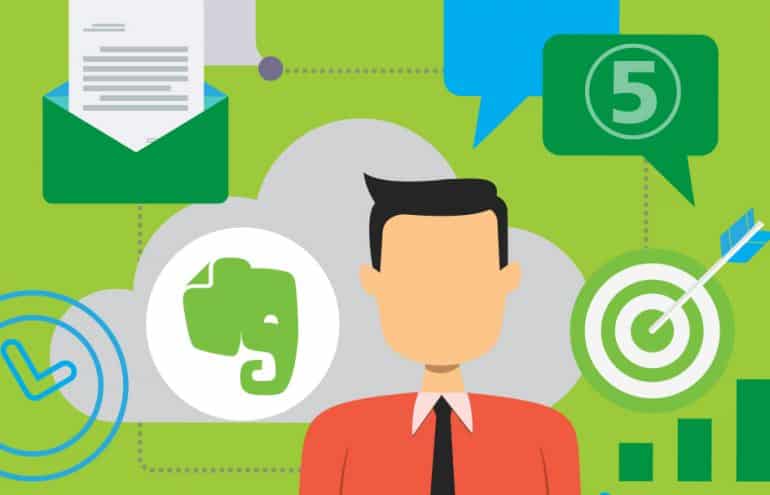When talking with lawyers about Evernote, I often get the same comment: “I heard it was a good productivity tool so I downloaded Evernote, but I haven’t figured out how to get started with it.” Fortunately, there are some simple ways to jumpstart using Evernote in your law practice.
First, for those unfamiliar with Evernote, it is essentially a cloud-based information repository. It can be used to collect, organize and access data; save and store web articles and emails; take notes; draft content; collaborate with others; annotate PDFs; and much much more. By syncing to the cloud, Evernote allows lawyers to access information they need when and wherever they need it. Lawyers can leverage Evernote in myriad ways, including storing and organizing legal research, administering firm business, archiving emails, drafting and storing marketing plans and materials, managing case and matter information, and tracking tasks.
Let’s get started with five simple ways to use Evernote.
1.Drafting and Storing Meeting Notes
Evernote is an excellent tool for quickly taking and saving meeting notes. Start a note with a click of a button from your computer or mobile device. Evernote automatically saves the note and syncs it to all your devices when you are connected to the internet. If you are taking notes on your mobile device, turn on smart note titles, which will predict the title based on your calendar, location and note contents.
You can also save handwritten notes as searchable PDFs by using Evernote’s built-in mobile photo tool to snap a picture of them for direct upload to your Evernote account.
2. Saving Webpages for Future Reference
Often, we stumble across interesting and important information on the internet that we might like to reference later, send to a client or pass on to a colleague. Evernote is an ideal place to store those articles and webpages. Evernote owes its popularity in part to its web clipper tool. With the web clipper, you can save articles, text and images from the web directly into Evernote from any device. If it’s an article you’d like to read later, save it to a “Read Later” notebook or give it a “Read Later” tag so you can easily find it in your Evernote repository.
3. Creating a Legal Research Repository
Many attorneys who use Evernote use the web clipper to save and organize their legal research. You can organize your research into topical notebooks, such as Employment Discrimination, Landlord-Tenant, Search and Seizure and so on. Then, when you save individual research files, such as case law, you can assign each one to the proper topical notebook and tag it with identifiers such as the matter(s) it references, its case proposition and disposition, fact pattern, and jurisdiction. The next time you need a SCOTUS case on sex discrimination, you can use Evernote search terms to retrieve it. No more wasting time searching through stacks of printed case law for that one case proposition you need, or reinventing the wheel by doing sophisticated searches in Westlaw or Lexis to locate something you’ve previously found.
4. Collecting and Storing Business Cards
What do you do with all those business cards you brought home from last night’s networking event? Do you leave them scattered on your desk (so they’ll inevitably end up in the trash) or put them in a box (and never reference them again)? Instead, upload them immediately to Evernote using its business card tool. By snapping a photo of a business card using the Evernote app on your mobile device, all the relevant information is automatically collected and imported into your Evernote account, as well as other contact databases such iCloud or Outlook. You can also use Evernote’s one-click LinkedIn feature to find your business card contact in LinkedIn and request a connection.
5. Saving and Storing Emails
Oftentimes, we receive emails with important information we need to reference at a later date. You can save those emails easily into Evernote. There are three ways to do so: 1) forward emails to your Evernote account using your unique Evernote email address (for Premium users only), 2) use the free Evernote web clipper with Gmail, or 3) use the free Evernote add-on for Microsoft Outlook (versions 2010 and 2013).
If you haven’t already, sign up for an Evernote account, download it onto your desktop or your mobile device (or both) and get started using it in one or all of these five ways.
For more about Evernote and a step-by-step guide for lawyers, you can pick up a copy of my book, “Evernote as a Law Practice Tool,” here.
Illustration ©iStockPhoto.com
Subscribe to Attorney at Work
Get really good ideas every day: Subscribe to the Daily Dispatch and Weekly Wrap (it’s free). Follow us on Twitter @attnyatwork.

















